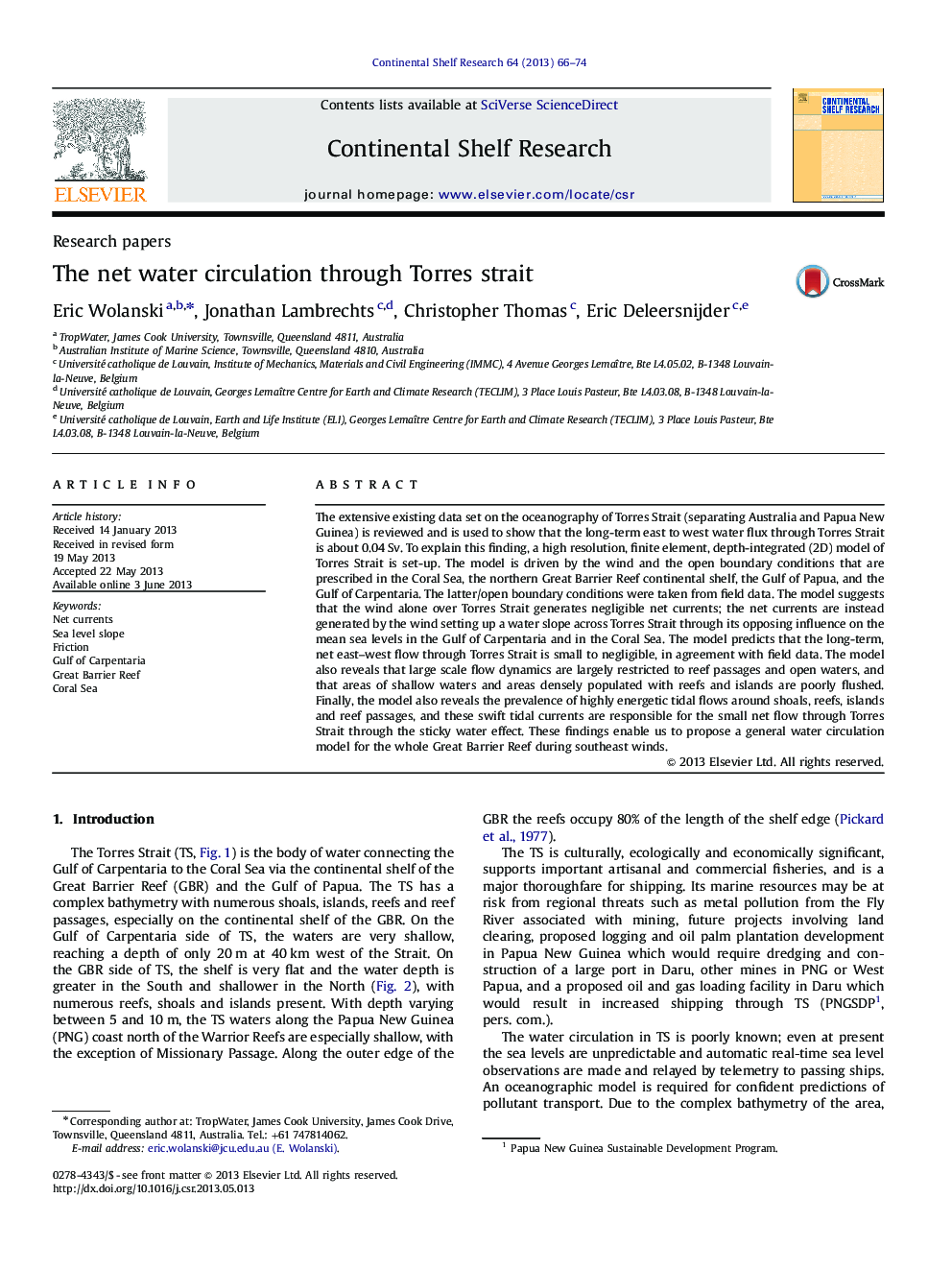| کد مقاله | کد نشریه | سال انتشار | مقاله انگلیسی | نسخه تمام متن |
|---|---|---|---|---|
| 4532119 | 1626148 | 2013 | 9 صفحه PDF | دانلود رایگان |

• We review the data about the net circulation through Torres Strait.
• The long-term net circulation is about 0.04 Sv, while wind-driven net transport events may reach 0.15 Sv.
• We model the circulation to show that the main driver is not the local wind stress.
• The main drivers are the sea level difference between the Gulf of Carpentaria and the Coral Sea and the sticky water effect.
The extensive existing data set on the oceanography of Torres Strait (separating Australia and Papua New Guinea) is reviewed and is used to show that the long-term east to west water flux through Torres Strait is about 0.04 Sv. To explain this finding, a high resolution, finite element, depth-integrated (2D) model of Torres Strait is set-up. The model is driven by the wind and the open boundary conditions that are prescribed in the Coral Sea, the northern Great Barrier Reef continental shelf, the Gulf of Papua, and the Gulf of Carpentaria. The latter/open boundary conditions were taken from field data. The model suggests that the wind alone over Torres Strait generates negligible net currents; the net currents are instead generated by the wind setting up a water slope across Torres Strait through its opposing influence on the mean sea levels in the Gulf of Carpentaria and in the Coral Sea. The model predicts that the long-term, net east–west flow through Torres Strait is small to negligible, in agreement with field data. The model also reveals that large scale flow dynamics are largely restricted to reef passages and open waters, and that areas of shallow waters and areas densely populated with reefs and islands are poorly flushed. Finally, the model also reveals the prevalence of highly energetic tidal flows around shoals, reefs, islands and reef passages, and these swift tidal currents are responsible for the small net flow through Torres Strait through the sticky water effect. These findings enable us to propose a general water circulation model for the whole Great Barrier Reef during southeast winds.
Figure optionsDownload as PowerPoint slide
Journal: Continental Shelf Research - Volume 64, 1 August 2013, Pages 66–74